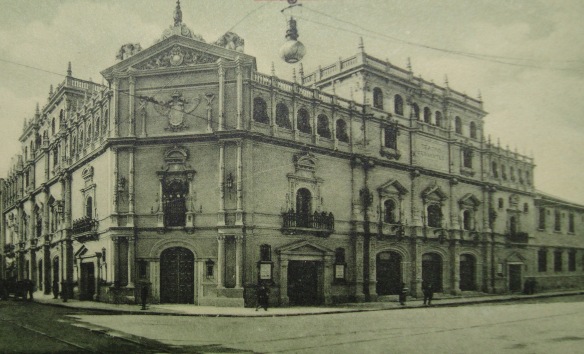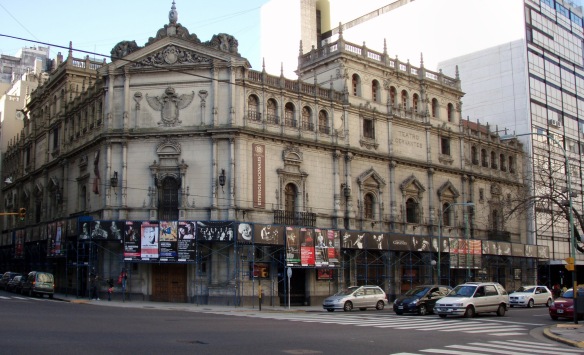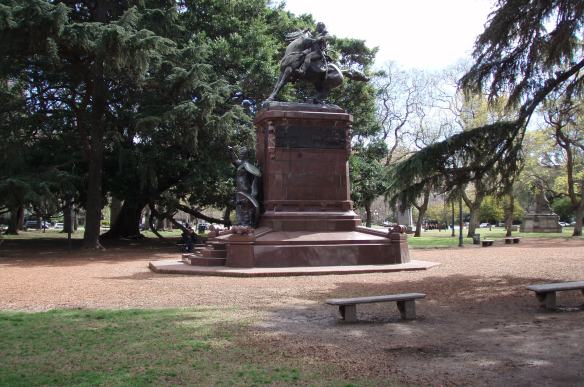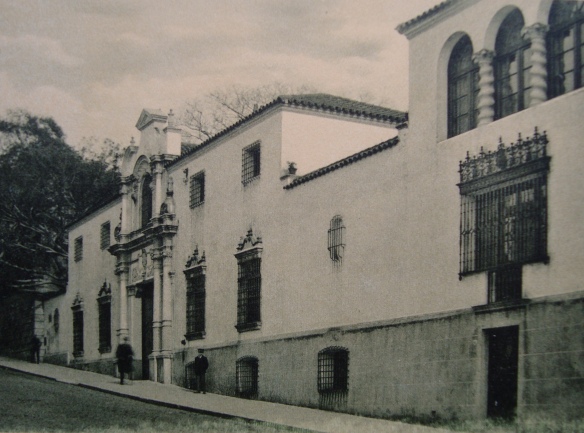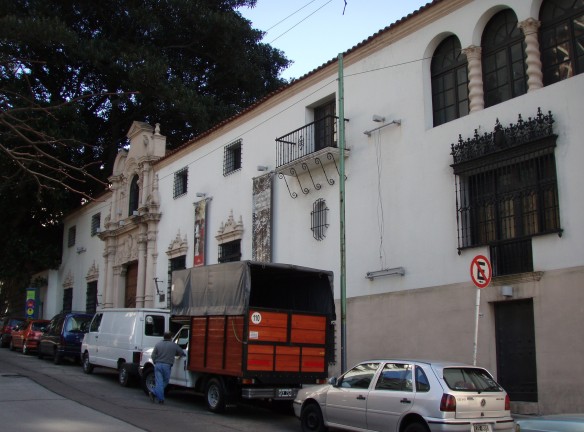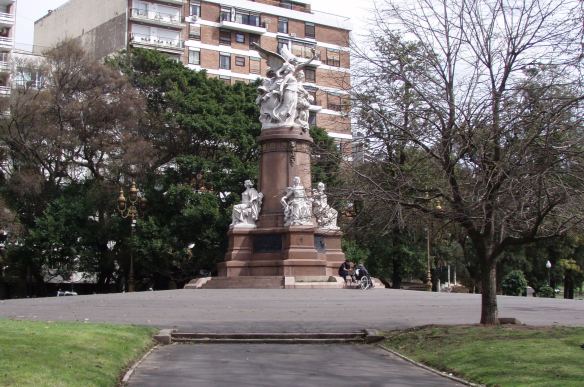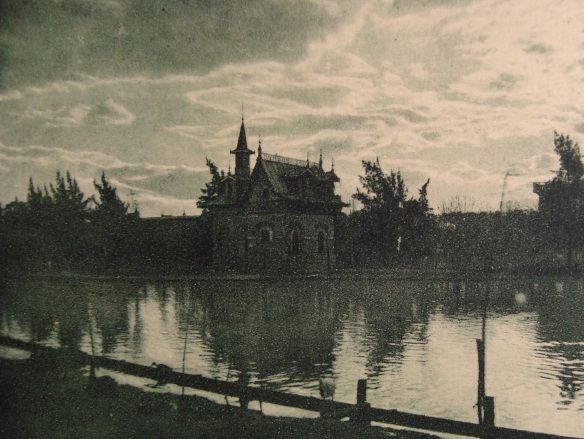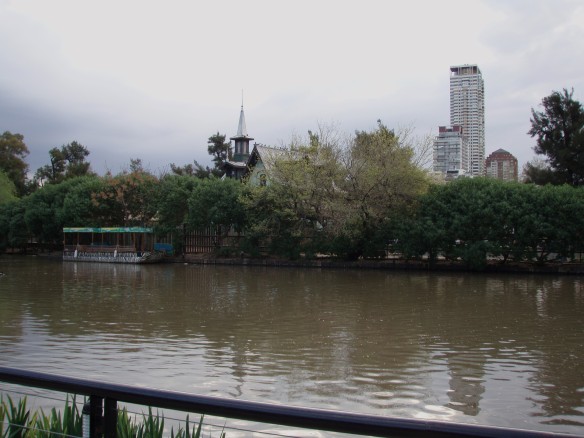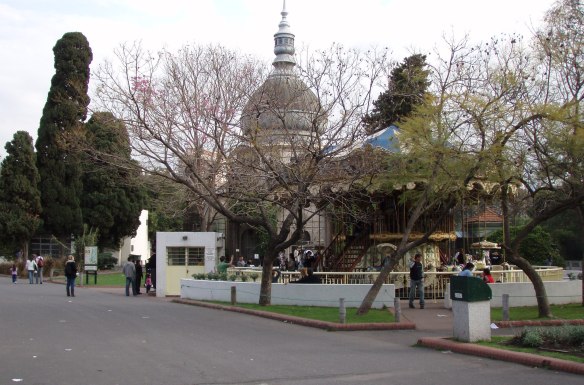
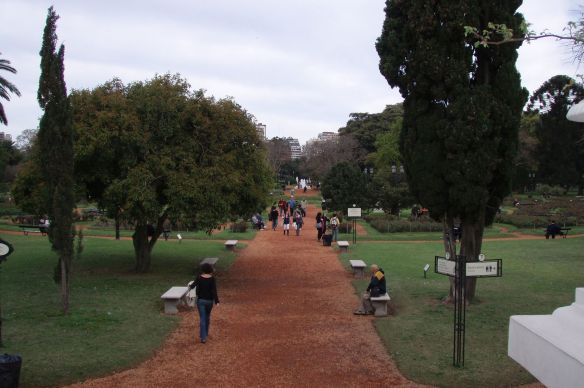
El Rosedal or the Rose Garden is found inside the Parque Tres de Febrero in the neighbourhood of Palermo. Work on the gardens was completed in 1914 and it now contains about 18,000 rose bushes, unfortunately none of them were in bloom when I visited.
The Rose Garden was declared a cultural heritage of the city of Buenos Aires in 2011 and so any changes or restoration must be done with respect to the original design.
This photo was taken from the top steps of the “Greek” bridge looking down towards the main path.

